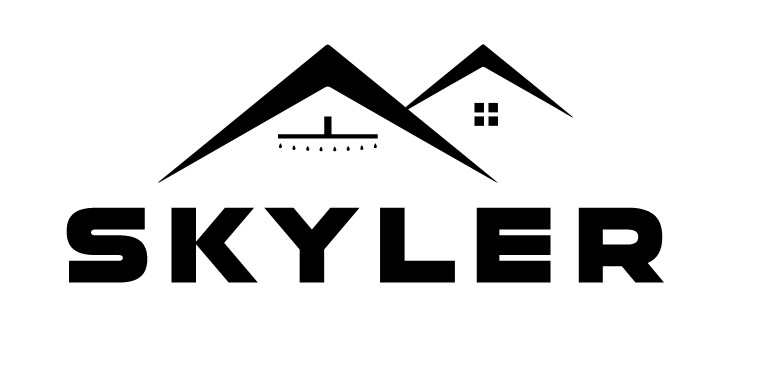Bookkeeping
Decoding DuPont Analysis
A high profit margin means the company is effective at maintaining profitability, which is crucial for its financial health. This measure is a key part of the DuPont analysis, as keeping track of profit margins helps in spotting cost-cutting opportunities that can boost profitability and operational efficiency. Additionally, different types of profit margins, such as gross and operating, offer insights into various aspects of company operations. Using DuPont analysis can uncover inefficiencies or risks missed with a standard ROE.
Free Toolshero Top 30 e-book
However, they need to understand that the revenue could be a product of an exorbitantly high unit price and a lower sales quantity and should check for it. Have the sales been low historically, and yet the firm has managed to maintain revenue growth? Intrinio amplifies the power of the DuPont formula by providing access to accurate and real-time financial data, equipping you with the insights needed to master this insightful analysis.
Understanding the DuPont Analysis
Understanding these elements allows accountants to identify the underlying drivers of ROE and assess the impact of various business strategies. It also facilitates benchmarking against industry peers and historical performance. By leveraging DuPont Analysis, accountants can provide more nuanced recommendations to enhance shareholder value and improve overall financial stability. The average ratios covering around 5 to 10 years, provide quite a realistic image of an organisation’s development. Business growth or a higher ROE doesn’t necessarily imply that profits are distributed among shareholders.
Net income and sales appear on the income statement, while total assets and total equity appear on the balance sheet. On the other hand, a fast-food restaurant is likely to see high asset turnover but a much smaller profit margin due to the lower prices. The last component, financial leverage, captures the company’s financial activities. As you can see in the table, SuperCo improved its profit margins by increasing net income and reducing its total assets. The investor can deduce that SuperCo also reduced some of its debt since average equity remained the same.
Return on equity (ROE) is a strong measure of how well a company’s management creates value for its shareholders. It’s a closely-watched number among knowledgeable investors but the number can be misleading. Joe’s business, on the other hand, is selling products at a smaller margin, but it is turning over a lot of products.
DuPont Analysis for Accountants: Decomposing Return on Equity
Liberated Stock Trader, founded in 2009, is committed to providing unbiased investing education through high-quality courses and books. We perform original research and testing on charts, indicators, patterns, strategies, and tools. Our strategic partnerships with trusted companies support our mission to empower self-directed investors while sustaining our business operations. To evaluate a hypothetical bank’s performance, analysts would primarily focus on its ability to generate income based on its financial assets.
The profit margin is a measure of how much profit a firm generates for every dollar of sales. In other words, it tells us how efficient a firm is at converting sales into profits. It’s generally a good sign for the company if this number goes up because it shows that the rate of return on the shareholders’ equity is rising. The problem is that this number can also increase simply when the company takes on more debt, thereby decreasing shareholder equity. This would increase the company’s leverage which could be a good thing but it will also make the stock riskier.
3-Step DuPont Analysis
- This enables a clearer understanding of the factors driving a company’s financial performance.
- However, it should be noted that management may lower pricing to increase sales, which would lower net profit.
- This would increase the company’s leverage which could be a good thing but it will also make the stock riskier.
- It is also useful for managers, as it can help identify areas of improvement within the company.
This method allows for a deeper understanding of the factors driving a company’s financial performance. By breaking down ROE into profit margin, asset turnover, and financial leverage, accountants can pinpoint areas of strength and potential improvement. The equity multiplier highlights a business’s financial leverage by comparing average total assets to shareholders’ equity.
Investors can conduct a cross-industry comparison to determine industry-specific benchmarks and norms, facilitating more informed investment decisions. Dividing the net income of $8 million by the total revenue of $100 million results in a net profit margin of 8%. This indicates the company’s effectiveness in managing costs and pricing. Consider Return on Assets (ROA) and the Debt-to-Equity ratio to assess financial health. The Equity Multiplier in DuPont Analysis highlights financial leverage but might signal financial risk if high. Identifying sources like these leads to better knowledge of the company and how it should be valued.
Next, we’ll move on to the balance sheet assumptions, for which we only require two data points, the “Average Total Assets” and “Average Shareholders’ Equity” accounts. All three of these new parts are extensions of the net profit margin calculation. Despite the DuPont model’s comprehensiveness, the calculation depends on the initial numbers. Thus, it can be subject to manipulation, and there would be no point in conducting any analysis.
- In other words, this model breaks down the return on equity ratio to explain how companies can increase their return for investors.
- Despite its disadvantages, the DuPont equation is still a helpful tool that can assess a company’s overall performance.
- DuPont Analysis is a framework used to break apart the underlying ratio components of the return on equity (ROE) metric to determine the strengths and weaknesses of a company.
ABOUT TOOLSHERO
The stock might deserve more of a discount despite the rise in ROE if the company is getting over-leveraged. It could be positive and show that the company is managing itself better if the company is under-leveraged. Based on these three performances measures the model concludes that a company can raise its ROE by maintaining a high profit margin, increasing asset turnover, or leveraging assets more effectively. The financial leverage ratio analyzes a company’s capital structure– the proportion of its debt to equity. Specifically, the financial leverage ratio looks at the company’s assets in relation to its stockholders’ equity.
The three-step equation told us that rises in the net profit margin, asset turnover, and leverage will generally increase ROE. The five-step equation shows that increases in leverage don’t always indicate an increase in ROE. The net profit margin calculates a company’s “bottom line” profitability after all expenses have been accounted for. It compares the company’s bottom line to its revenue to see how efficiently the company is turning revenue into profit by maximizing revenue and minimizing expenses. DuPont analysis is a useful tool for evaluating the components that make up a company’s ROE calculation.
Different accounting practices between companies can also make accurate comparisons difficult. The biggest drawback of the DuPont analysis is that it still relies on accounting equations and data that can be manipulated. Plus, even with its comprehensiveness, the DuPont analysis lacks context as to why the individual ratios are high or low, or even whether they should be considered high or low at all. As mentioned, a DuPont analysis breaks ROE into its constituent components to determine which of these factors are most responsible for changes in ROE.
In order to help you advance your career, CFI has compiled many resources to assist you along the path. We now have all the required inputs to calculate ROE using both the 3-step and 5-step DuPont approaches. But with some rearranging of the terms, we arrive at the three standard ratios mentioned earlier. dupont method formula Here is a DuPont analysis of the multinational food and drinks corporation Nestlé. Its comparison is made with two of its competitors Tyson Foods and Kraft Heinz, over the years.



